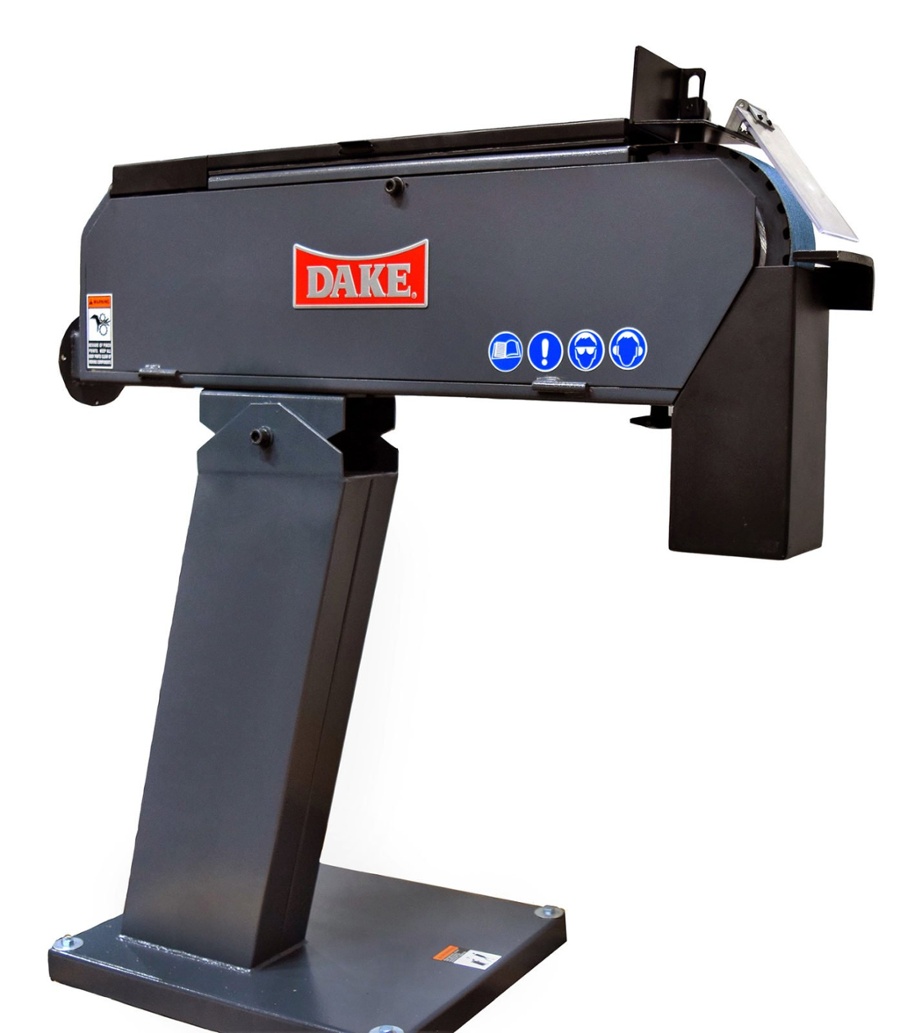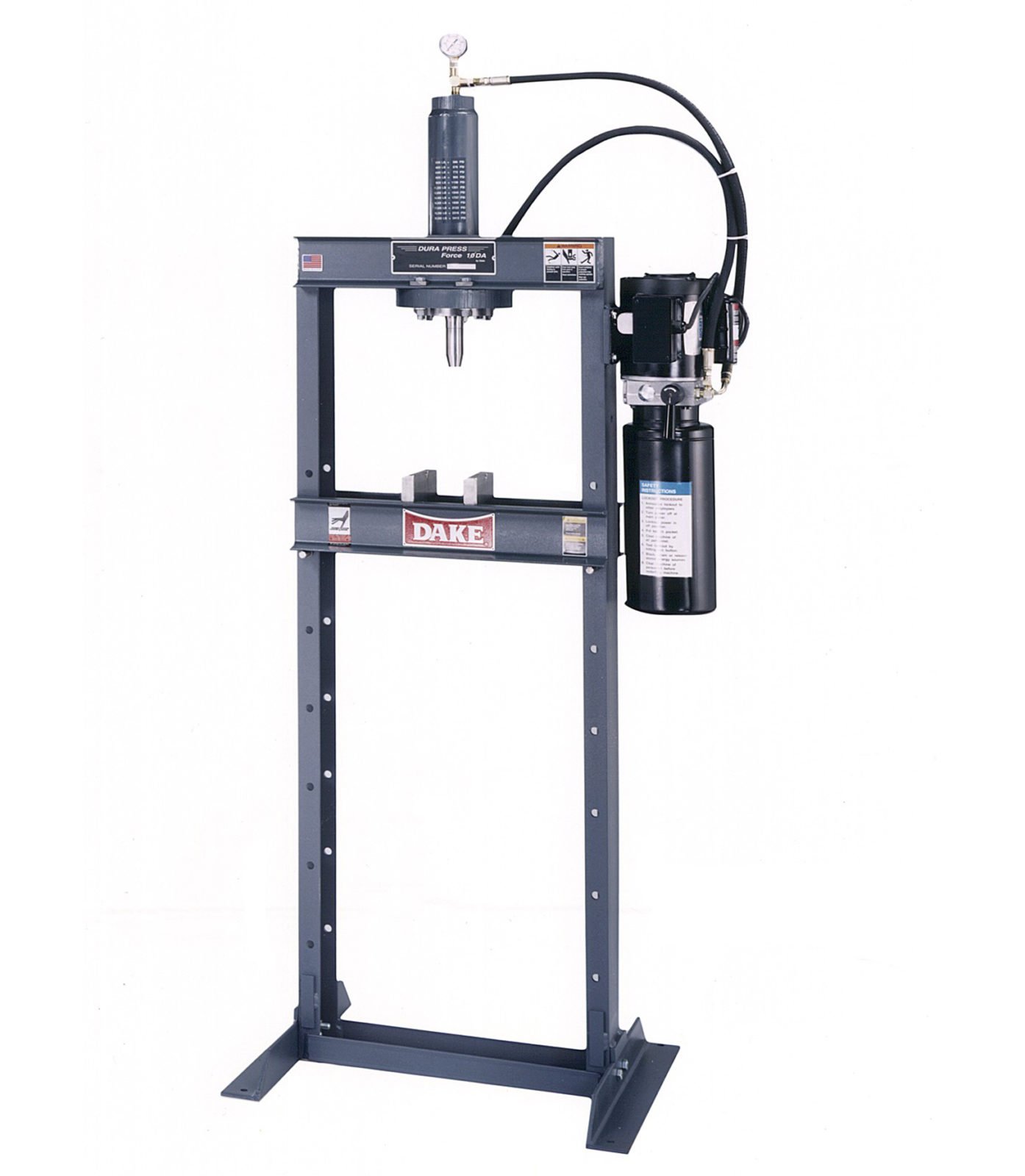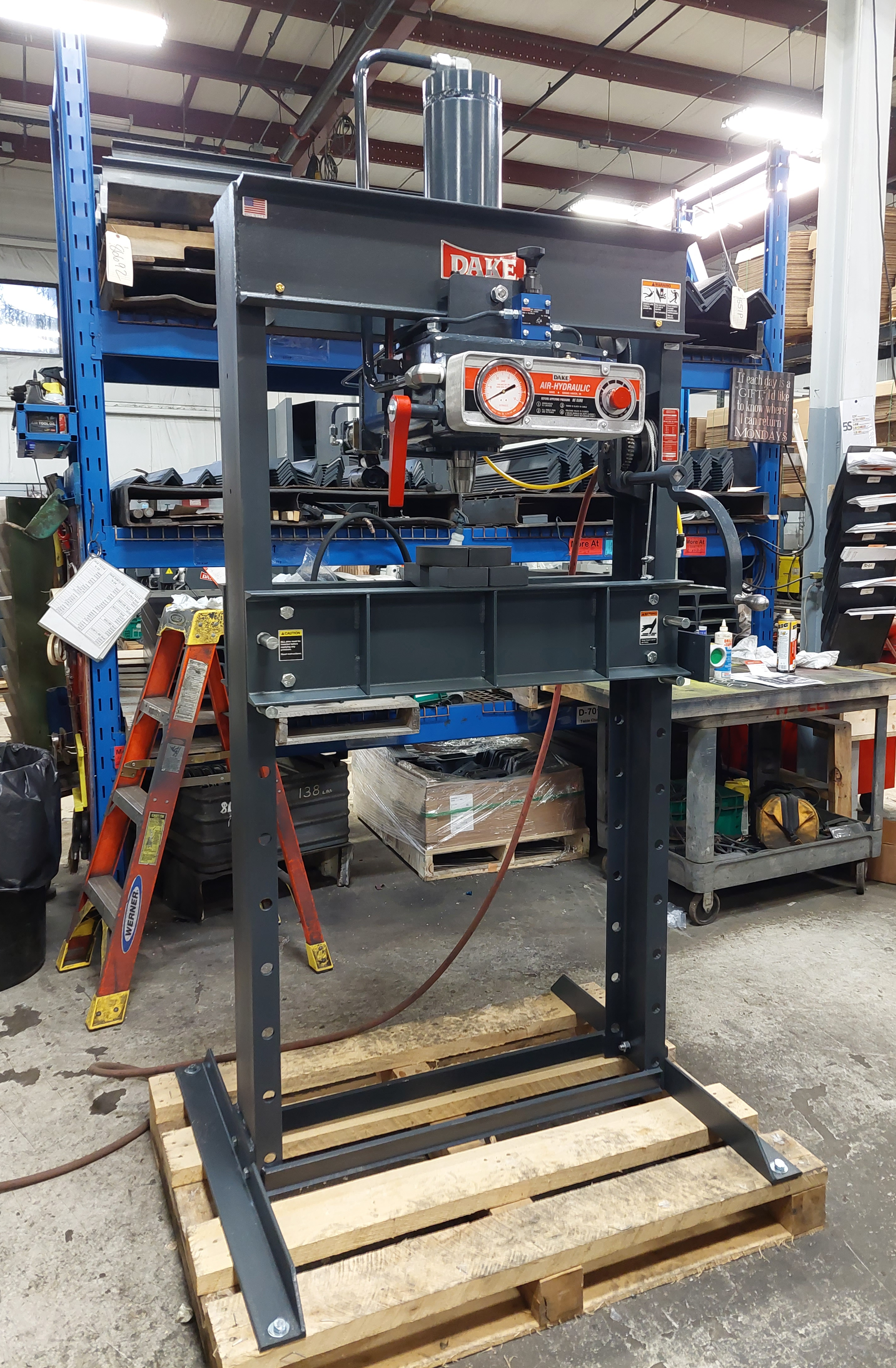If you find yourself wishing that you could create a professional-looking finish on your various metal pieces, then we have just what you need.
Here at Dake, we offer the Belt Grinder Model G-75 for all of your metalworking needs. With a belt size of 3” x 79”, you can’t go wrong with this machine. Its size and shape allow you to have access to a 3” x 21” plane for grinding operations like contouring, roughing, and even shaping.
You can also use it to deburr nonferrous metals such as stainless steel.
Belt Grinder Model G-75
Equipped with a 3-phase 220-volt motor, the Dake Belt Grinder G-75 produces a total of 4 horsepower. It can run up to a speed of 6,600 fpm, and it features a 3" x 8” contact wheel. Weighing approximately 250 lbs, this machine can be used for a variety of operations including foundry settings and fabrications.
The sturdy base provides stability and a pivoting point for quick and easy height adjustments. Meanwhile, the Plexiglass shield is used to prevent the metal piece from moving during the finishing process. The front wheel is in a fixed position and vented. This allows for advanced belt tracking and enhanced rigidity along the radius of the wheel.
Another feature the G-75 Belt Grinder comes with is a hinged cover located on top of the machine. As the operator, you can open this cover to use the entire length of the belt for larger metal pieces.
Our favorite belt options for this particular model are 40 grit and 60 grit. These numbers refer to the size of the grain on the belt stripe. Lower numbers indicate that the belt is coarser and has larger grains. In contrast, a higher grit number indicates that the belt grain is smaller and finer.
Choosing the Right Grit
For metalworking, we recommend 40 grit and 60 grit belts with our G-75 Belt Grinder. Although the grit scale ranges from extra coarse (24 to 36 grit) to extra fine (240 to 600 grit), the best belts for creating professional finishes on metal are coarse and medium grains.
A coarse grain belt has a 40 to 50 grit range, and it is typically used for shaping and deburring. On the other hand, a medium grain belt has a grit range of 60 to 100. It is used to polish off metal and remove any scuffs or marks.
Choosing the Right Belt Material
Now that you know which grit is best suited for metalworking with the Belt Grinder G-75, it’s time to figure out what type of material is best. As with grit, a belt can be made out of a wide range of materials.
Generally classified as natural or synthetic abrasives, it might seem a bit overwhelming if you are new to the world of metalworking. Natural grains include flint, emery, and garnet. Meanwhile, synthetic grains are known as zirconia alumina, aluminum oxide, and silicon carbide.
Out of these materials, the only ones you mainly need to be concerned with for metalworking are synthetic materials. The natural grains are best suited for wood products as opposed to metal. However, there is one natural grain belt that you can use in metalworking.
Sharp enough to remove rust damage, emery is a great natural option. It can quickly polish hard metals for a sleek, clean finish.
As for synthetic materials, they are all much more durable than natural grains. Zirconia alumina is perfect for deburring. It is also very long-lasting because of the way the material interacts with the metal.
As you grind a piece of metal with zirconia alumina, it actually sharpens its own grit particles. The result of this is not having to purchase new belts very often.
Next, we have aluminum oxide. Although it can be used to smooth out hardwood, we like it for sanding and polishing alloy steel and bronze. It is very durable, and it can be used with a wide range of materials.
Finally, silicon carbide is the most durable, long-lasting material for belt grinding. Out of all of the aforementioned abrasives, this one is our personal favorite.
You can produce professional finishes on countless materials including softwoods, hardwoods, plastic, and, of course, metal. If you are looking for a multi-purpose belt for your metalworking shop, this is a great option.
How Does a Belt Grinder Work?
Packing a powerful punch, the G-75 Belt Grinder features a long belt that has been looped over two cylindrical drums (wheels) inside the machine. When the grinder is turned on, the wheels will begin to spin, moving the belt in a steady, continuous motion.
While the belt only moves in one direction, the operator can move the metal piece to ensure that no spot is left untouched. As we mentioned, the G-75 model allows the height of the base to be adjusted for easier movements.
Our Belt Grinder is too heavy to be hand-held. It requires a bench or work table to sit on. However, it doesn’t take up too much space, and it can accommodate larger metal pieces.
Belt Grinder Safety Tips
- Before you begin grinding, shaping, or contouring, you must first wear protective gear. Earplugs, safety glasses, and a face mask should be worn to keep your ear, eyes, and lungs safe.
- Grinding metal will create sparks. It’s inevitable. To avoid starting an accidental fire inside your metalworking shop, you should make sure that the grinder is clean before you begin working on a new project. Sawdust is a grinder’s biggest kryptonite.
- If you need to change the belt, be sure to unplug the machine first.
- Before plugging the Belt Grinder into a power source, check to see if the power switch is in the “Off” position. You can switch to “On” after you have plugged the machine in.
- Be sure to always secure your metal pieces while you are grinding on them. You don’t want a chunk of metal flying out of your hands and across the room.
Learn More at Dake
If you are interested in purchasing a Dake Belt Grinder or learning more about our other products, get in touch with our specialists today.
-1.jpg?width=1200&height=525&name=DAKE003_%20Logos_Red%20(002)-1.jpg)

.jpg)

